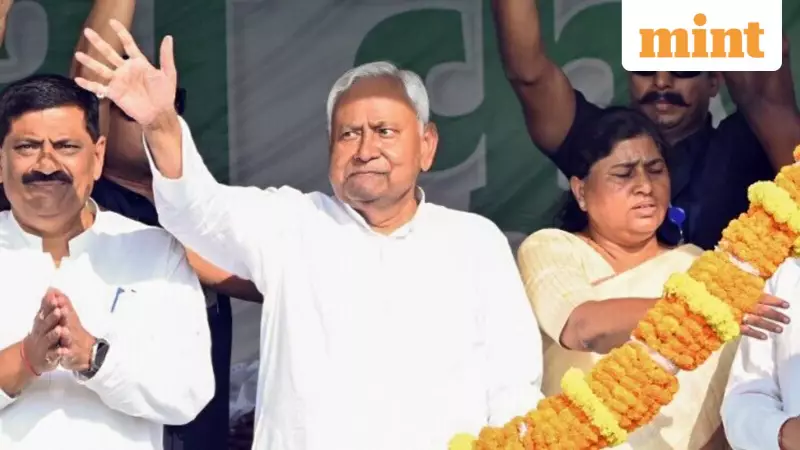
In a stunning political performance that defied conventional wisdom, Nitish Kumar has secured another term as Bihar's chief minister, cementing his position as the state's most enduring political force. The 2025 assembly elections culminated in a resounding victory for Kumar's National Democratic Alliance, which was leading in 207 of the 243 seats when reports were finalized.
The Numbers Behind the Mandate
The election results reveal a dramatic shift in Bihar's political landscape compared to the 2020 assembly polls. While the NDA had previously won 125 seats with a 37.26% vote share, their current performance demonstrates significant gains across the state.
Within the ruling alliance, both major partners delivered impressive results. The Bharatiya Janata Party (BJP) was leading in 91 seats, while Kumar's Janata Dal (United) was ahead in 83 constituencies. This balanced performance underscores the coalition's strength and coordination.
The opposition Mahagathbandhan, meanwhile, faced a crushing defeat, managing only about 30 seats. The Rashtriya Janata Dal (RJD) was leading in 27 seats, while the Congress party trailed with just 5 constituencies. This represents a significant decline from their 2020 performance of 110 seats collectively.
What Powered Nitish Kumar's Victory
Several factors converged to create Kumar's winning formula, with women voters emerging as his most loyal constituency. Female voter turnout showed a massive 8.8 percentage point lead over male participation, reflecting the success of Kumar's carefully crafted women-centric policies.
Over his two decades in power, Kumar introduced numerous initiatives targeting women voters, including free bicycles for school-going girls, reservations in governance and government jobs, and the controversial liquor prohibition law. His recent direct benefit transfer of ₹10,000 to women under the Mukhyamantri Mahila Rozgar Yojana provided the final touch to this strategic outreach.
Another crucial element was the persistent contrast Kumar drew between his administration's 'sushasan' (good governance) and the preceding RJD regime's 'jungle raj.' This narrative proved powerful enough to overcome voter fatigue with his 20-year incumbency and concerns about unemployment.
Kumar's alliance with the BJP also proved instrumental, with Prime Minister Narendra Modi's popularity and the NDA's broad caste coalition—encompassing upper castes, Extremely Backward Classes (EBCs), and a section of Dalits—providing critical electoral heft.
Why Tejashwi Yadav's Challenge Failed
For Tejashwi Yadav and the opposition alliance, the election results represent a devastating setback. Four key factors contributed to their poor performance.
First, Tejashwi couldn't escape the legacy of his parents—Lalu Yadav and Rabri Devi—whose regime continues to haunt the RJD's prospects. Despite his youth, voters saw him as continuation rather than change.
Second, while Tejashwi correctly identified unemployment and migration as critical issues, his solution of promising government jobs to every family failed to convince voters. Many saw the proposal as impractical and lacking vision.
Third, the Mahagathbandhan alliance became more liability than asset. The Congress party failed to provide substantial support, and their 'vote chori' campaign resonated poorly with voters.
Finally, the opposition's reliance on the traditional Muslim-Yadav combination, representing about 30% of the population, proved insufficient. Tejashwi's attempt to build cross-cutting support among youth voters needed more time and strategic depth to succeed.
The Road Ahead for Bihar
Despite this decisive victory, significant challenges await Kumar's new government. Unemployment remains a pressing concern that the NDA must address with concrete solutions in this term. While the opposition failed to capitalize effectively on this issue, it undoubtedly weighed on voters' minds.
Questions about Kumar's health and the absence of a clear successor also loom large. The chief minister's reluctance to groom second-rung leadership could pose long-term stability concerns for both his party and the state.
For the RJD, this defeat represents an existential challenge. Though Tejashwi Yadav has youth on his side, he must rapidly develop strategies to distance himself from his parents' legacy while building broader appeal beyond traditional support bases.
For now, however, Nitish Kumar stands as Bihar's undisputed leader—a textbook example of how political acumen, strategic alliances, and consistent voter outreach can overcome even the most daunting electoral challenges.





